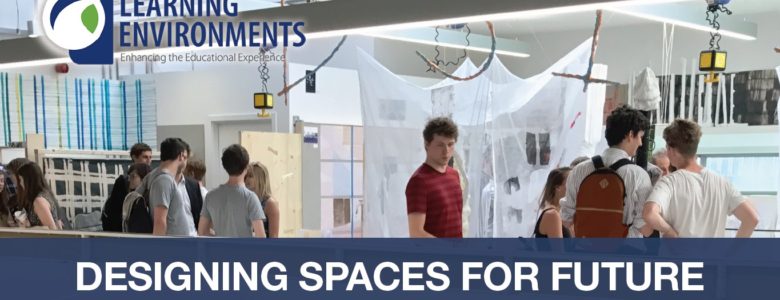
Summary report for conference in June, full workshop details and more information on this event available here.

Designing Spaces for Future Focused Schools co-organised by A4LE and the School of Architecture and Cities at the University of Westminster, set out to challenge the way we design school spaces. The day started with five multi-disciplinary teams of teachers, architects, students, policy advisors and representatives from Government responding to design briefs set by two head-teachers for secondary and primary school spaces. It ended with a seminar looking at OECD work on its School User Survey and Case Study collection on transforming learning environments, and Department for Education work post occupancy evaluations.
The themes of the day included empowering users, collaboration and conversation. Frances, Lady Sorrell, Chancellor of the University of Westminster and co-founder of the Sorrell Foundation reflected on the importance of empowering users, particularly students, in the design of schools. In her keynote address, Joanne Caddy Senior Analyst from the OECD’s Directorate for Education and Skills pointed to the rising demand for interpersonal skills and the importance of social and emotional skills. “Designing learning spaces must build on users’ perspectives if they are to be successful,” she said.
Dave Strudwick, Director of Way American Online School secondary and Gary Spracklen, Head Teacher Prince of Wales School, Dorchester set the design challenge briefs for learning zones within a secondary and primary school respectively. The main constraint was to meet the spaces standards set by the UK Department for Education. They then acted as a resource throughout the day to further clarify and give feedback to the multi-disciplinary teams as they progressed the design.

The team led by Lene Jengsby Lang from Autens in Denmark started by using a physical model in which different types of furniture were placed to delineate different spaces and which became the focus of conversations in the group. Other groups approached the challenge either through drawings, diagrams or sketches and then creating models to probe ideas; or initially simply by having a conversation. The team led by Lyle Christie, from architect Reiach and Hall, imagined a future where learning has become shared between the virtual and the physical.
“An important message from the workshop was that a one- size fits all approach will not meet the learning and teaching needs for future-focused schools”, said Terry While Chair of A4LE UK. The process needs to take account of context but needs to be designed from the “inside out” through collaborative engagement.
The ideas are being made available by A4LE UK as a way of both developing the conversation with the Department for Education but also for schools and designers to take forwards on real projects. “They are ideas that people can build upon now,” said Terry White, Chair of A4LE UK.

During the seminar that followed, Alastair Blyth and Julie Velissaratou, both consultants to the OECD, explained how the OECD’s School User Survey aims to help schools improve their learning environments by enabling students and teachers to articulate what works and what does not in terms of the spaces they use. They also introduced the OECD work on collecting Case Study examples on transforming learning environments. Maria Ustinova, education consultant with the World Bank, further developed this by presenting the results from using the OECD School User Survey across a sample of schools in the Russian Federation. Jennifer Singer, design advisor from the Department for Education, discussed their work on measuring quality of schools and how to improve the user experience. Better information to provide better evidence of what works is paramount. The OECD is seeking examples of transformations in learning environments, and invite schools, teachers, designers, policy makers and others with an interest in the effectiveness of the learning environment, to share their experiences: http://www.oecd.org/education/effective-learning-environments/
In 2020 we A4LE be holding a follow up workshop to further develop these themes. In June we will hold a workshop where school students and teachers will work with design professionals following a similar process.
Creating effective future focussed learning environments demands the engagement of all stakeholders. Educationalists, teachers, architects, design professionals, researchers and students will come together to respond to a set of well-defined learning briefs focussed on three learning areas across the primary/secondary age range. We have asked Headteachers working in schools to create a forward-thinking learning brief for three pathfinder learning areas.
The Headteachers will be explicit in defining a brief that is driven by the pedagogy, curriculum experience and organisational approach that is needed for a contemporary learning and teaching agenda. In addition, we recognise the important work of the OECD on its school user survey and the effective learning environments case studies. This work will add further value to the day and Joanne Caddy, Senior Analyst from the OECD Directorate of Education and Skills, will introduce the day and take part in all of the activities.
For full flyer, see PDF below:
Designing Spaces for Future Focused Schools Flyer

